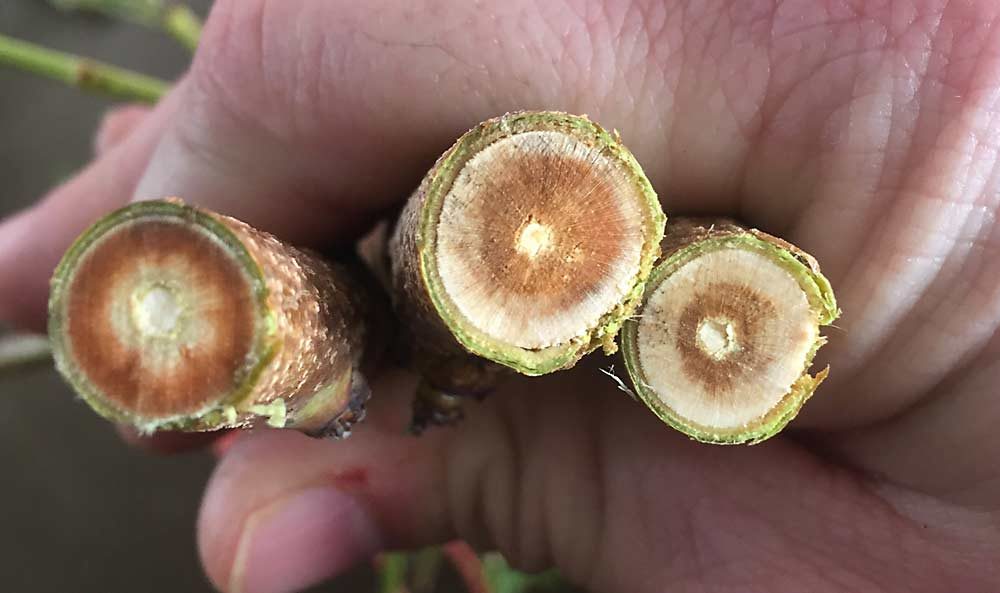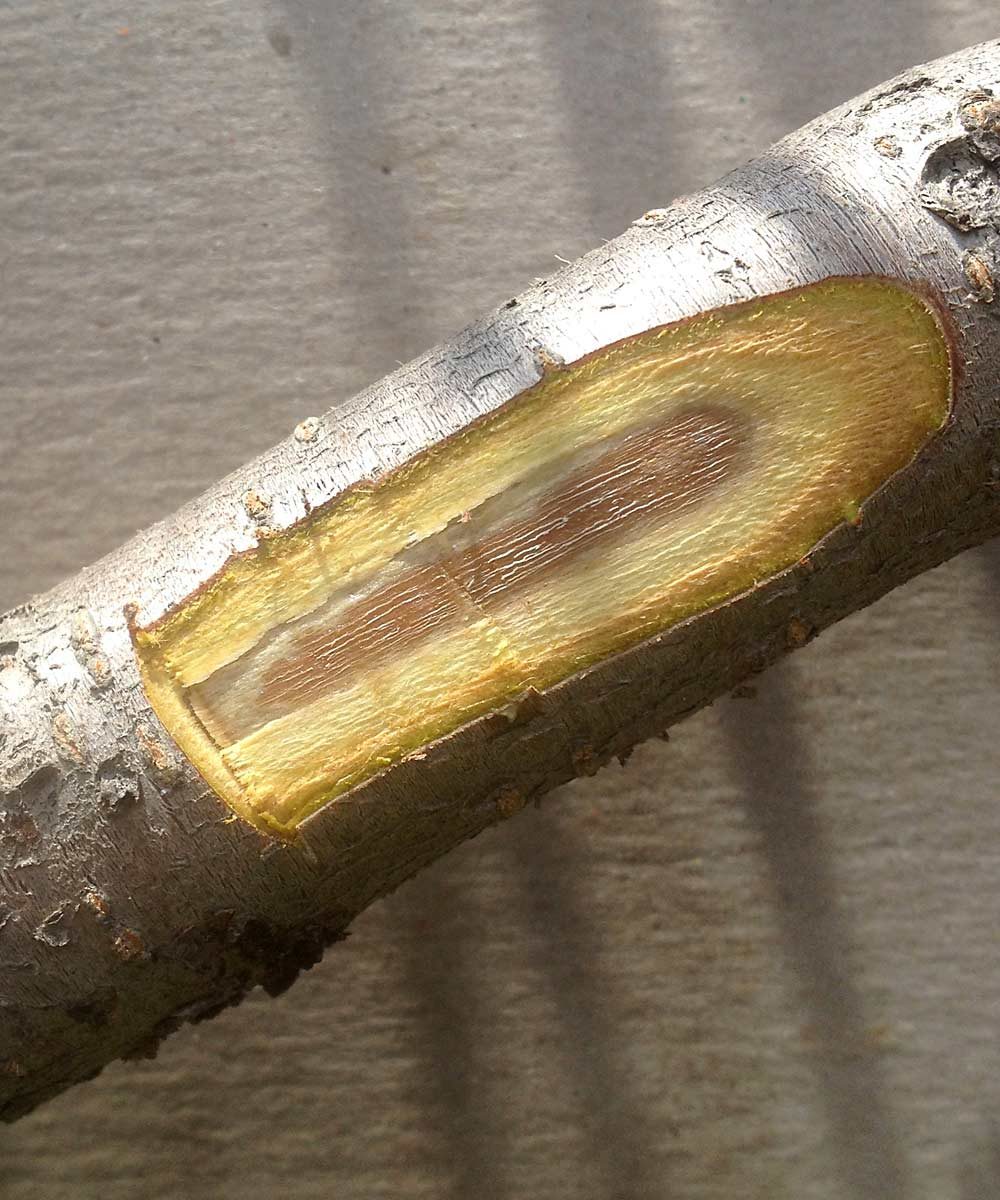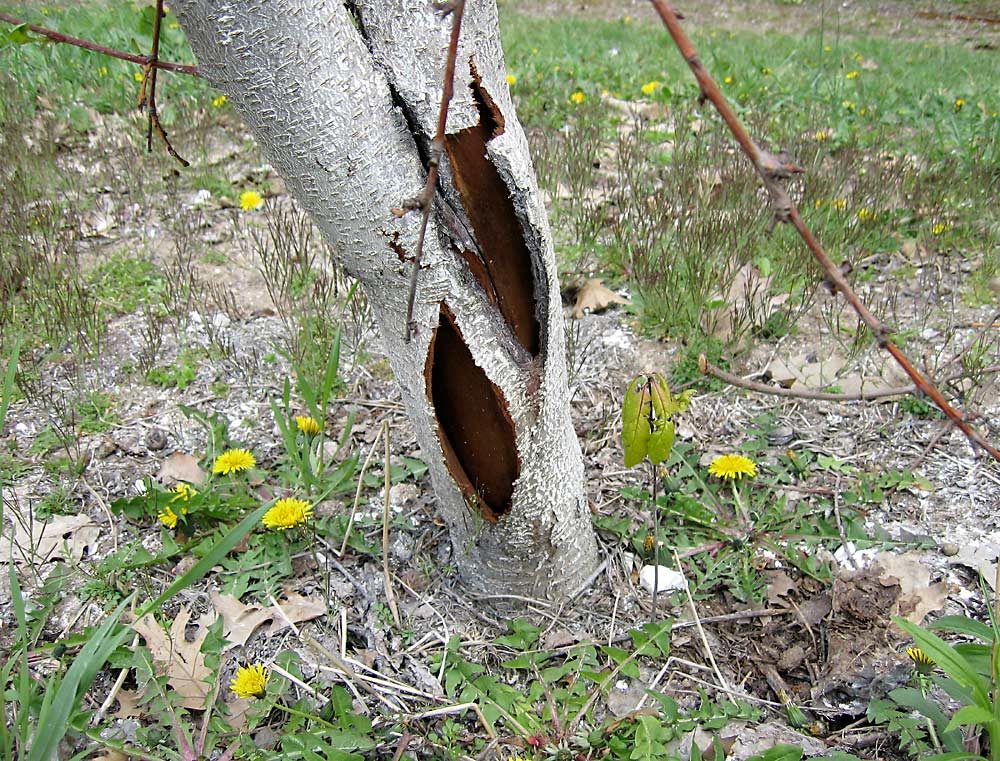
Following frigid winter weather, like the severe cold snaps that hit far Southwestern Michigan last winter, fruit tree growers should quickly begin thinking about pruning. The timing and extent of pruning can help keep their orchards healthy into the future, according to Bill Shane, senior extension tree fruit specialist at Michigan State University’s Southwest Michigan Research and Extension Center in Berrien County.
For trees that are already struggling to recover from cold damage, the best time to prune is generally in the spring between bud swell and bloom set, he said. Pruning either too late or too early can actually do more harm than good, especially for very young trees and very old trees that have accumulated insults over the years and no longer have a high level of reserves.
Growers will sometimes delay pruning following an extreme cold event because they first want to assess the crop load before making any cuts, but Shane cautions against that approach.
“The problem is that as we go later and later into the growing season, it gets tougher on a tree, which basically sets itself up for a certain number of leaves to support the tree,” he said. Late pruning disrupts that balance and puts stress on already besieged trees.
Likewise, pruning too early can be detrimental, especially on young and elderly trees.
“This past year, we saw considerable tree decline where growers had pushed the pruning time a bit early on their plots,” Shane said. “If you prune too early, it tends to wake up the tree a bit. So, if you’re pushing into the February pruning time when the tree is dormant, and then you get another real cold spell, that tree is more prone to winter damage.”
The next big question is how much to prune. One way to help determine the scope of cold damage is to slice into a branch and look at the tissue inside, he said. Dark brown tissue indicates severe injury, light brown reveals minor injury and cream or light-green coloration denotes healthy tissue.
“This gives growers an opportunity to do a bit of assessment on their trees,” he said. Combined with information on the temperatures experienced, they can make a good guess on where they might want to prune.

Tissue browning is a good guide, agreed Mark Longstroth, MSU Extension fruit educator, but not the only approach. He suggested another option to assess damage following a frigid episode is to take a few cuttings, particularly right above the snow line where the cold settles, and bring them inside, with stems in water, to watch for bud swell.
Just as with timing, Shane advised growers to avoid pruning too much or too little. “Where growers have gotten themselves into trouble is when they look at a tree in the summer and say, ‘Well, I don’t have a crop load this year, so since I’ve been wanting to lower the height of this tree, this is a perfect opportunity,’” he said.
That kind of severe pruning, however, greatly compounds a recovering tree’s normal healing process. Growers should limit post-damage pruning to no more than a quarter of the tree’s branches, Shane said.
Longstroth likewise cautioned against drastic pruning, although he felt that it could extend to as much as a third of a cold-damaged tree. Either way, he noted, it is a far cry from the one-time practice of pruning off all the old scaffold limbs from a heavily cold-damaged peach tree and trying to grow new ones from the trunk. “That’s way too brutal,” he said.
On the other end of the scale, growers may be tempted to skip pruning altogether on trees that won’t be producing. That is a bad idea, Longstroth said. “Essentially what happens then is your fruiting zone just moves three feet higher in the air, and you don’t want that, so they should be pruned,” he said.
Shane concurred that pruning is always critical, noting that it allows light to infiltrate and promotes next year’s fruiting buds.
“Sometimes growers are facing less revenue for the year because there isn’t much of a crop due to winter damage, but if they’re going to keep going with that block for the long term, they need to put in at least the minimal amount of pruning that’s needed,” he said.
With pruning, it’s all about avoiding the extremes in both timing and extent, Shane concluded. “Try not to intensify the stress on that tree when it’s most vulnerable and do what is best for the health of the tree,” he said. •
—by Leslie Mertz
What to do about trunk splitting

Extreme cold can cause trunks to split, but growers can help the tree recover, said Bill Shane, Michigan State University senior extension tree fruit specialist.
“If you know that you’ve gone through an episode of low temperatures, quite often you can catch the cracking at the early stages (within a few days of it happening) and just use little nails to tack the bark back down. That does help quite a bit,” he said.
When several weeks have passed since the splitting occurred, and the exposed tissue beneath the bark has already dried, Shane suggested doing a little surgery.
“At that point, you can use a knife — like a linoleum knife — to trim away the bark that’s peeling away and rolling upwards, leaving behind the bark that’s close to the underlying tissue,” he said. “This helps the healing process by encouraging callus tissue development out from the edges of the good bark.”
Once done, trunk sprays should be used to deter insects, such as peach tree borers and dogwood borers, that favor roughened and dead areas on trunks.
—L. Mertz






Leave A Comment